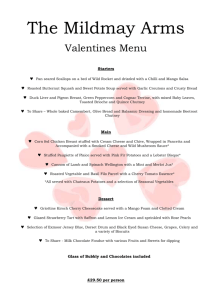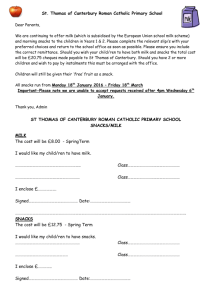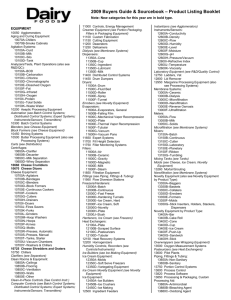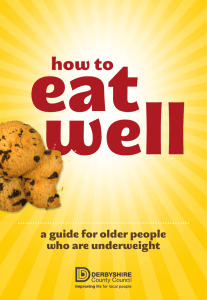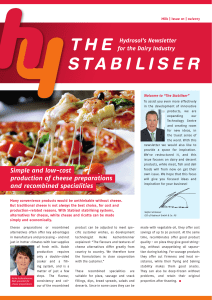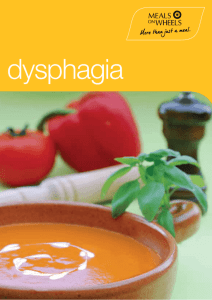Poor Appetite or Weight Loss
advertisement
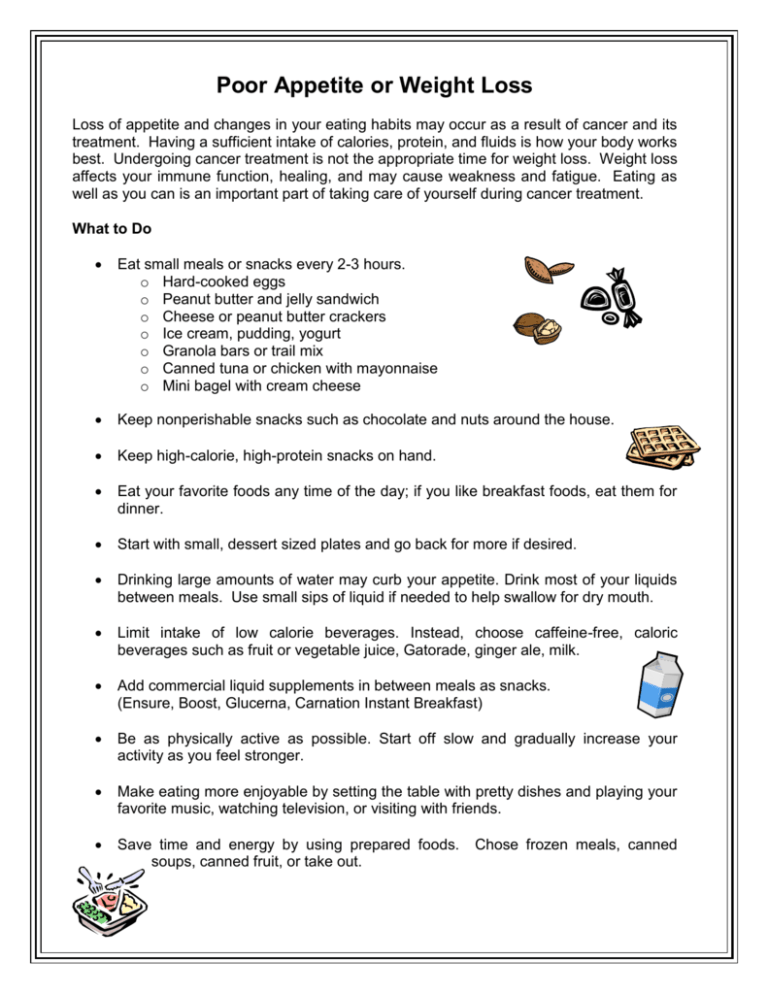
Poor Appetite or Weight Loss Loss of appetite and changes in your eating habits may occur as a result of cancer and its treatment. Having a sufficient intake of calories, protein, and fluids is how your body works best. Undergoing cancer treatment is not the appropriate time for weight loss. Weight loss affects your immune function, healing, and may cause weakness and fatigue. Eating as well as you can is an important part of taking care of yourself during cancer treatment. What to Do Eat small meals or snacks every 2-3 hours. o Hard-cooked eggs o Peanut butter and jelly sandwich o Cheese or peanut butter crackers o Ice cream, pudding, yogurt o Granola bars or trail mix o Canned tuna or chicken with mayonnaise o Mini bagel with cream cheese Keep nonperishable snacks such as chocolate and nuts around the house. Keep high-calorie, high-protein snacks on hand. Eat your favorite foods any time of the day; if you like breakfast foods, eat them for dinner. Start with small, dessert sized plates and go back for more if desired. Drinking large amounts of water may curb your appetite. Drink most of your liquids between meals. Use small sips of liquid if needed to help swallow for dry mouth. Limit intake of low calorie beverages. Instead, choose caffeine-free, caloric beverages such as fruit or vegetable juice, Gatorade, ginger ale, milk. Add commercial liquid supplements in between meals as snacks. (Ensure, Boost, Glucerna, Carnation Instant Breakfast) Be as physically active as possible. Start off slow and gradually increase your activity as you feel stronger. Make eating more enjoyable by setting the table with pretty dishes and playing your favorite music, watching television, or visiting with friends. Save time and energy by using prepared foods. soups, canned fruit, or take out. Chose frozen meals, canned High Calorie, High Protein Foods Milk products: Eat cheese on toast or with crackers. Add grated cheddar cheese to baked potatoes, vegetables, soups, noodles, and meat. Use milk for cooking in place of water for cereal and cream soups. Include cream sauces on vegetables and pasta. Add powdered milk to cream soups and mashed potatoes, puddings and casseroles. Add yogurt or cottage cheese to favorite fruits or blended smoothies. Eggs: Keep hard-cooked eggs in the refrigerator. Chop and add to salads, casseroles, soups, and vegetables. Make a quick egg salad. All eggs should be well cooked to avoid the risk of harmful bacteria. Meats, poultry, and fish: Add leftover cooked meats to soups, casseroles, salads, and omelets. Mix diced and flaked meat with sour cream and spices to make dip. Beans, legumes, nuts, and seeds: Sprinkle seeds or nuts on desserts such as fruit, ice cream, pudding, and custard. Also serve on vegetables, salads, and pasta. Spread peanut butter on toast and fruit or blend in a milkshake. Snacks, Desserts: Mix commercial supplements with ice cream or mix fruit with yogurt for a smoothie Glass of whole milk with cookies Add whipped cream to fruit, jello, or pudding Extra calories: Use whole milk or fortified milk (1 cup whole milk with ¼ cup nonfat dry milk powder) Melt extra butter or margarine into warm foods, like potatoes, rice, vegetables, etc. Add sour cream or gravy to food for extra flavor and calories. Use extra mayonnaise in tuna and chicken salad, butter on bread or toast, dressing on salad. Add crackers, oatmeal, rice, or barley to soups, add croutons to salads. For more information or further recommendations contact your Dietitian Keri Ryniak, RD, CSO, LDN, CNSD at 443-849-8186 Adapted from Eating Made Easy. Recipes and Tips for the Cancer Survivor. Milton J. Dance, Jr. Head and Neck Center at GBMC and Eldridge B, and Hamilton KK, Editors, Management of Nutrition Impact Symptoms in Cancer and Educational Handouts Chicago, Il: American Dietetic Association; 2004. Revised: 01/11/2008
